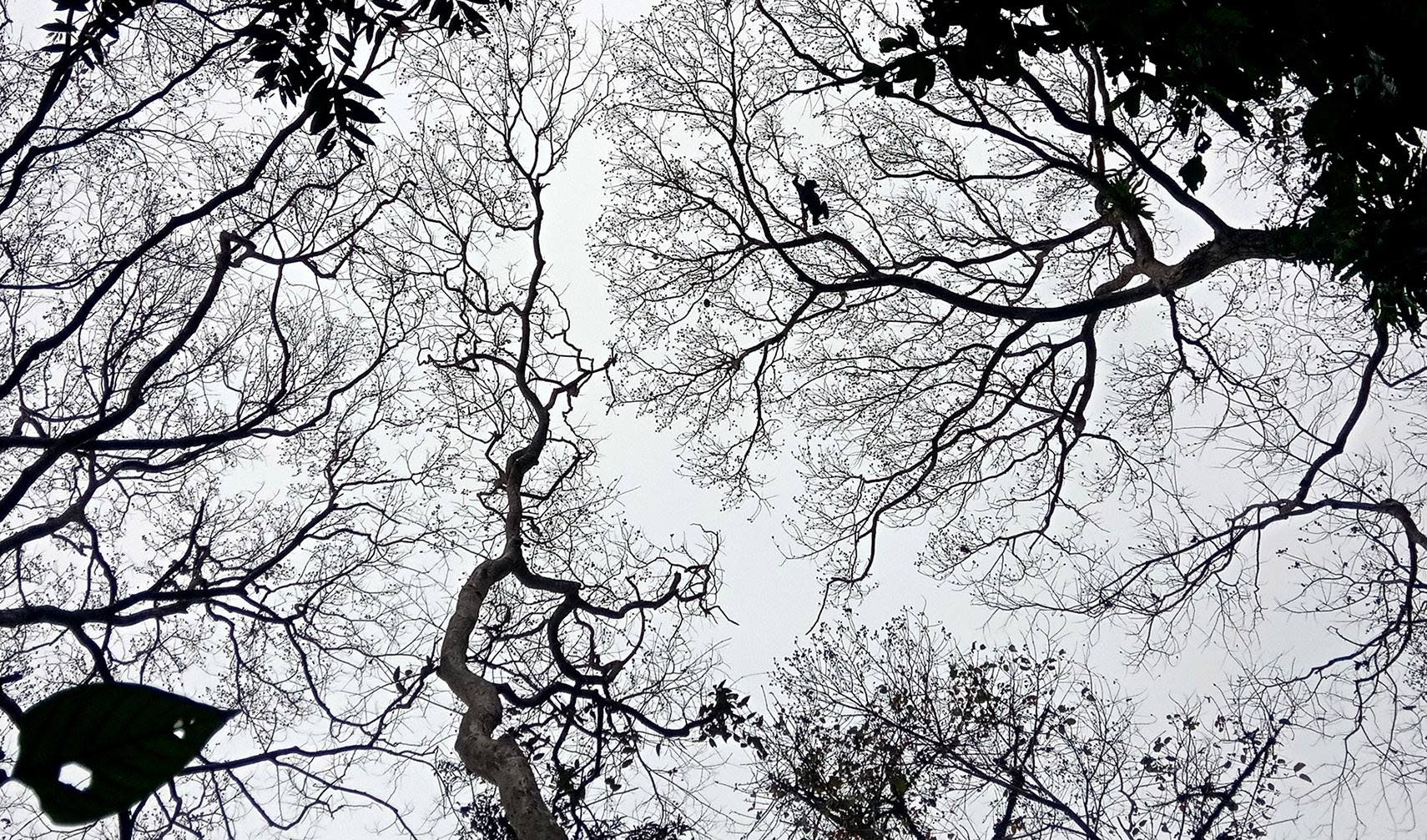 Listen to this article
•
15:34 min
Listen to this article
•
15:34 min
A soothing breeze greets us as we traverse the narrow path through a tea garden, and enter calm and serene Hollongapar Gibbon Wildlife Sanctuary. The forest floor is strewn with a variety of seeds and leaves. From a distance I hear ‘hook, hook, hook’ — the call of hoolock gibbons. If we are lucky, we may see it and various other primate species like a stump-tailed macaque, pig-tailed macaque, capped langur, slow loris, or rhesus macaque while walking through the forest.
This sanctuary, located in the Jorhat district of Assam, is situated in the biodiversity hotspot of the Eastern Himalaya. Although small in size (just 20.98 square kilometres), the sanctuary is rich in floral diversity within large tracts of evergreen and semi-evergreen forest patches. Hundreds of species of trees, shrubs, herbs, lianas, bamboos, and grasses thrive in this habitat.

Hollongapar Gibbon Wildlife Sanctuary is named after the trees and apes found within it. Hollongapar roughly translates to ‘by the side of hollong trees’. These towering trees rise to about 150 feet and are the predominant tree in this landscape. For the other part of its name, look to the 100 western hoolock gibbons, the only non-human ape found in India, that live here.
Folk connections
One of the most common trees in this forest is the elephant apple or Dillenia indica. It bears large fruit and is an important component of the diet of elephants and primates. The local people often use the sour fruit in curries and pickles. Called ow tenga (also ou tenga) in Assamese, this tree finds mention in a local folktale. The story is about a king whose two wives delivered babies on the same day. The elder queen had a boy and the younger, a fruit called ow-tenga (elephant apple). The disappointed younger queen discarded the fruit. However, it would keep rolling back close to her every time she threw it out. One day it rolled to the riverbank where a prince happened to be fishing. He saw a beautiful maiden emerge from the fruit for a bath in the river. The prince was taken in by her beauty and wanted to marry her. He convinced his parents to send a formal proposal for him to marry the ow-tenga. After the royal wedding, the prince became depressed as the beautiful maiden remained hidden inside the fruit, except when he was asleep. Finally, on the advice of an old beggar woman he mixed rice, banana, and curd into a paste and kept it near his bed and pretended to sleep. When the maiden emerged that night, the prince quickly threw the ow tenga fruit into the fire. As predicted, the maiden fainted, and the prince revived her by applying the paste on her forehead. With her cover gone, the prince and the maiden lived happily together.


Flora and fauna connections
The forests of Hollongapar and its primates have a symbiotic relationship. At some places, the shrub layer is covered by a bed of Forrestia mollissima, a plant with turmeric-like leaves, referred to as athubhanga in Assamese. Stump-tailed macaques can often be seen uprooting the plant and feeding on it.
Then there is Vatica lanceaefolia, a rare plant species found only in this forest, in Jeypore, and a few other forest patches in upper Assam. According to IUCN, this tall tree has been classified as endangered, with only a few trees left in the world. Also notice the seeds of Terminalia chebula, which have wings that enable them to disperse in the direction of the wind.

The forests of Hollongapar harbour a great diversity of flora with commercial and ethno-medicinal value. The forest floor is often scattered with the seeds of Terminalia arjuna trees, commonly called ‘arjun’. These seeds are also wind dispersed, but they travel only short distances, and the new saplings can be seen close to the parent tree. The bark of the arjuna is used for medicinal purposes, in the treatment of ulcers and hypertension. Others, like the indigenous medicinally important rudraksha (Elaeocarpus sphaericus) are also found in Hollongapar.
On a walk through this beautiful forest do look out for the enormous bheleu/bhalu tree (Tetrameles nudiflora), and the Himalayan mango, or bon aam (Mangifera sylvatica). There are excellent flowering trees too, like the brilliant red silk cotton tree, himolu (Bombax ceiba), selleng (Sapium baccatum) with little white flowers, and gahorisopa (Magnolia griffithii), a variety of magnolia. Spending a few days amidst the primates and trees of Hollongapar can be an enlightening lesson in plant and animal diversity and biology.








